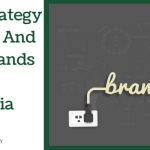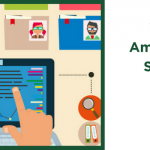In the past, I’ve spoken about the importance of testing and analytics, so hopefully, by now, you’ve decided to run your own tests.
You should come up with your tests organically based on your marketing, as well as what your company does. For that reason, I’ve tried to use examples below that work for pretty much anybody.
There are literally thousands of tests you can try though. All you need is a hypothesis which you want to confirm. These tests will get you started.
Most tests work with the use of two variations (A/B), but some of these tests work with multiple variants. The important thing is to collect enough data for each variant so that your results are enough to give you a definitive conclusion.
Test 1: Testing Different Advertising Copy
Hypothesis: The copy for your advertisement influences how many people decide to click the ad.
Measurement: Click Through Rate – Percentage of people that click the ad.
Method: Run two ads which are exactly the same aside from the text. By looking at the Click Through Rate on both ads, you can see which one performs better. Once you’ve figured out which one performs best, you can kill off the underperforming ad – you know that one had the less effective copy.
Test 2: Social Media Update Timings
Hypothesis: When you post your daily social media updates each day influences how many people see the updates.
Measurement: Reach – The number of people that see a post.
Method: For this test, it’s hard to use the same posts at different timings, because that would mean posting the same thing twice. Instead, I would suggest posting all of your updates for a week at the same time. Then the next week try a different time. You can switch the timing each week until you’ve found your sweet spot.
Test 3: Social Media Images
Hypothesis: The image you post with a social media update influences how many people interact with the post.
Measurement: Engagement – The number of people that share, leave comments or otherwise engage with the post. Reach – How many people saw the post.
Method: If you post the same posts on your social media regularly (such as a post about one of your services) you can use the same copy each time, but change the image. By comparing the posts against each other, you can see which image is most successful for when you use the same post in future.
Test 4: The Position Of The Testimonials On Your Landing Page
Hypothesis: The position of the testimonials on your landing page can influence whether your visitors follow a call to action.
Measurement: Conversions or Click Through Rate – The number of people that complete the call to action.
Method: Putting your testimonials above your call to action on your landing page, may make people more likely to convert as they’ll have more proof to influence them. Alternatively, putting testimonials before the call to action may just add more information that turns users off before getting to the call to action. By sending one-half of your traffic to each variant you can find out where best to place your testimonials and use that landing page in future.
Test 5: The Style Of A Call To Action Button
Hypothesis: Changing the style of a button on your landing page can have an effect on conversions.
Measurement: Conversions or Click Through Rate – The number of people that complete the call to action (click the button.)
Method: If the aim of your landing page is to have the user press a button, then you can test different variants of the button. For example, you can run two landing pages, one with a small button, one with a large button. Then you can see whether button size changes your conversion rate. You could also test the copy included in the button to see if that has an influence too. Or even leave out the copy altogether and try an icon instead.
Test 6: Website Pop-Up Timings
Hypothesis: When a pop-up appears on a users screen – while visiting your website -will determine how likely they are to sign up to your mailing list through the pop-up. Too early and they may be less likely to sign-up.











